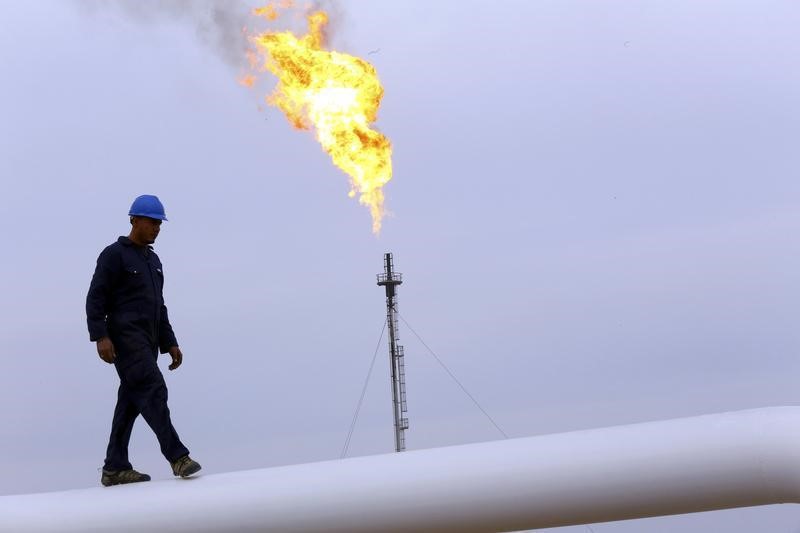By Barani Krishnan
Investing.com - Street protests in Iran or the anticipation of a China deal aren’t swaying oil buyers. Crude prices sunk further for the year on Monday on easing tensions in the Middle East and amid worries that oil could get into another oversupply situation from seasonal lows in consumption.
West Texas Intermediate, the benchmark for U.S. crude, settled down 96 cents, or 1.6%, at $58.05 per barrel.
Brent, the global benchmark for crude, was down 77 cents, or 1.2%, at $64.21 by 3:55 PM ET (20:55 GMT).
Brent hit mid-September highs of $71.75 last week, while WTI surged to an April peak of $64.72, after Iran fired missiles at U.S. airbases in Iraq. Tehran’s action was in response to the U.S. killing of top Iranian general Qassem Soleimani on Jan. 3.
But the missiles didn’t kill any U.S. servicemen and President Donald Trump decided to stand down any further escalation with Iran, dramatically easing tensions in the Middle East and crude prices as well. Until then, WTI and Brent had risen on Soleimani’s killing, especially with oil tankers avoiding the Strait of Hormuz next to Iran as precaution.
On Monday, WTI was down 5% on the year while Brent showed a decline of 2.7%. The U.S. crude benchmark fell more than 6% last week alone, its sharpest weekly decline in six months.
Social media was awash with images of protests in Tehran on Monday as Iranians took to the streets to condemn the Islamic Republic’s leadership after Tehran’s forces accidentally downed a Ukraine Airlines flight last while firing at the US airbases in Iraq.
But the protests did little to boost the prices of crude, which had trouble sustaining geopolitical premiums even after last September’s attack on Saudi Arabia’s oil facilities in Abqaiq that briefly knocked out 5% of world crude supply.
“There have been plenty of geopolitical issues in the Middle East since the start of the year,” said Olivier Jakob, founder of PetroMatrix, an oil risk consultancy in Zug, Switzerland.
“However, last week has shown that Abqaiq was no exception: the oil markets have little appetite to buy a geopolitical premium," Jakob said. "It is easier for crude oil to sustain a rally on no news, or just the weekly U.S. stock data, than to sustain a rally on flying missiles.”
Analysts said fears were growing that oil might head into another oversupply situation after last week’s U.S. government data showing huge inventory builds.
The U.S. Energy Information Administration data showed that crude stockpiles rose by 1.2 million barrels for the week ended Jan. 3, versus market expectations for a decline of 3.6 million barrels.
Gasoline inventories soared by 9.1 million barrels, compared with expectations for a rise of 2.7 million barrels, the data showed. Distillate stockpiles, meanwhile, climbed by 5.3 million barrels, versus forecasts for a build of 3.9 million barrels.
Crude traders and investors also appeared indifferent to the upcoming U.S.-China phase one deal, which could contain promises by Beijing to buy more crude from the United States.
Trump and China’s Vice Premier Liu He are to sign the deal at the White House on Wednesday, with nary an official detail announced so far on the contents of the pact.
Bloomberg reported at the weekend that there could be $200 billion in Chinese commodity imports, although it indicated this may have more to do with grains, given Trump’s plan to “repair some of the damage suffered by farmers”.
